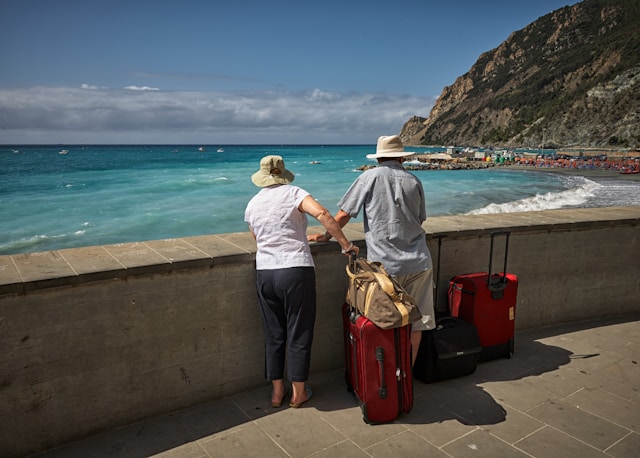
Seattle is a vibrant, modern city filled with culture, natural beauty, and innovation. From iconic landmarks like the Space Needle to eclectic neighborhoods like Fremont and Capitol Hill, there’s a lot to explore. And while any urban destination comes with its share of safety considerations, Seattle is generally a safe city for tourists—especially if you stay alert and use common sense. This guide breaks down the essentials you need to know to feel secure while soaking in everything the city has to offer.
1. Overall Safety: A Traveler-Friendly City
Seattle ranks as a relatively safe U.S. city, especially when compared to other major metro areas. Violent crime is relatively low, and most issues tourists might encounter are non-violent, like petty theft or car break-ins.
Good to Know:
The most visited areas—Downtown, Capitol Hill, Queen Anne, and the University District—are generally safe during the day and early evening
Most violent incidents occur late at night and are often tied to nightlife areas or isolated situations
Tourist-related crimes are typically crimes of opportunity (like unattended bags or visible valuables)
Pro Tip: Use the same precautions you would in any large city: stay aware, avoid poorly lit alleys at night, and keep your belongings secure.
2. Public Transportation Safety
Seattle’s public transit—buses, light rail, ferries, and streetcars—is widely used and considered safe.
Tips for a Smooth Ride:
Light Rail and buses have security cameras and frequent service, especially in high-traffic zones
Avoid empty train cars or bus stops late at night if possible
Keep phones and wallets out of easy reach from doorways or crowds
Bonus: Locals are friendly and usually happy to offer directions if you’re unsure where to go
3. Neighborhood Awareness: Where to Be Cautious
While most Seattle neighborhoods are safe and tourist-friendly, a few areas warrant extra awareness.
Neighborhood Notes:
Downtown and Belltown: Busy and vibrant, but can feel sketchy at night due to homelessness or occasional drug activity—stick to main streets and well-lit areas
Pioneer Square: Great during the day for history and food, but be alert at night
Rainier Valley & Aurora Avenue: Not major tourist zones, but if you venture here, go during the day and with purpose
Bottom Line: Seattle’s issues are more about visible homelessness and addiction rather than actual threats to tourists
4. Homelessness: Visible but Mostly Harmless
Seattle has a significant unhoused population, particularly downtown and near transit hubs. While their presence can be jarring to some visitors, most are not dangerous and will not engage unless provoked.
How to Navigate It:
Be respectful and avoid confrontation
A simple “no thanks” or walking away is enough if approached
Don’t give out money—consider donating to a local nonprofit instead
Perspective: This is part of Seattle’s complex urban landscape, and the city is actively working on solutions
5. Emergency Services and Medical Help
In case of emergency, Seattle has excellent infrastructure and access to care.
Emergency Details:
Dial 911 for police, fire, or medical emergencies
Hospitals like Harborview Medical Center and Swedish First Hill are top-rated and near central areas
Pharmacies like Walgreens and Bartell Drugs are widely available for quick meds or first aid
Travel Tip: Consider travel insurance that includes medical coverage, especially if you’re from outside the U.S.
6. Natural Safety: Weather, Terrain, and Earthquake Awareness
Seattle’s geography offers beauty and the occasional natural quirks.
Be Prepared For:
Rain: It’s frequent but usually light—carry a waterproof jacket rather than an umbrella
Hills: Some areas are steep—wear supportive shoes
Earthquakes: Rare but possible—know where emergency exits are, especially in high-rises
Bonus: No major risk of hurricanes, tornadoes, or extreme heat/cold
7. Nightlife and Late-Night Travel
Seattle’s nightlife is diverse and fun, but late-night street smarts still apply.
Smart Moves:
Stick to well-known bars, clubs, and venues in areas like Capitol Hill, Ballard, or Belltown
Use rideshares like Uber/Lyft to get home after midnight
Travel in pairs or small groups if bar hopping
Tip: Late-night Link Light Rail trains run less frequently, so plan your return trip accordingly
8. Digital Safety and Travel Tips
Seattle is a tech-savvy city—so bring your devices, but stay smart about them.
Digital Dos:
Use a VPN on public Wi-Fi (like in coffee shops or hotels)
Don’t flash expensive gear like DSLR cameras or laptops in isolated areas
Download local transit and safety apps (like Transit, OneBusAway, or MyShake for quake alerts)
Conclusion: Safe, Savvy, and Ready to Explore
Seattle is a city built for discovery—and it’s safe for travelers who stay aware and prepared. Whether you’re enjoying skyline views from Kerry Park, navigating Pike Place Market, or biking along the Burke-Gilman Trail, knowing a few basics will go a long way. Trust your instincts, travel smart, and Seattle will reward you with unforgettable memories, unique neighborhoods, and some of the best coffee on the planet.
